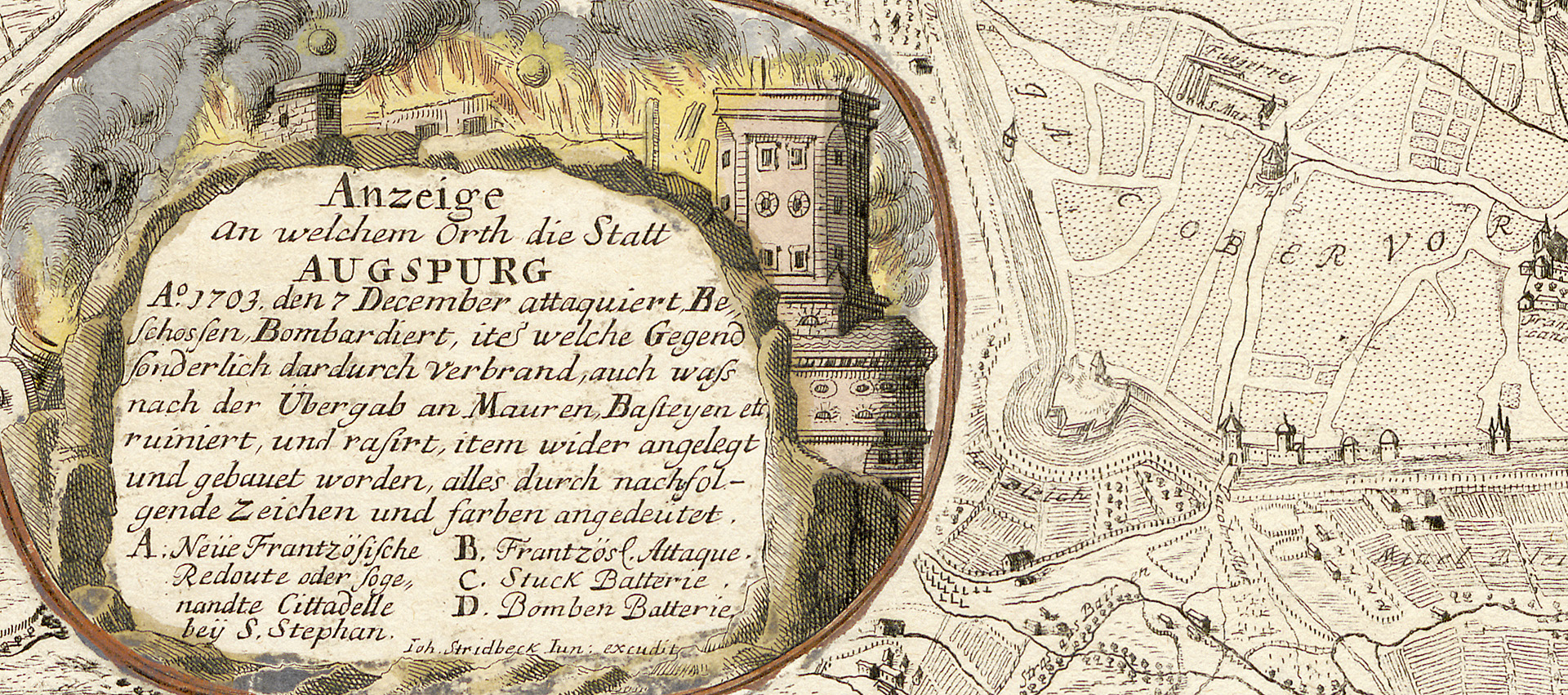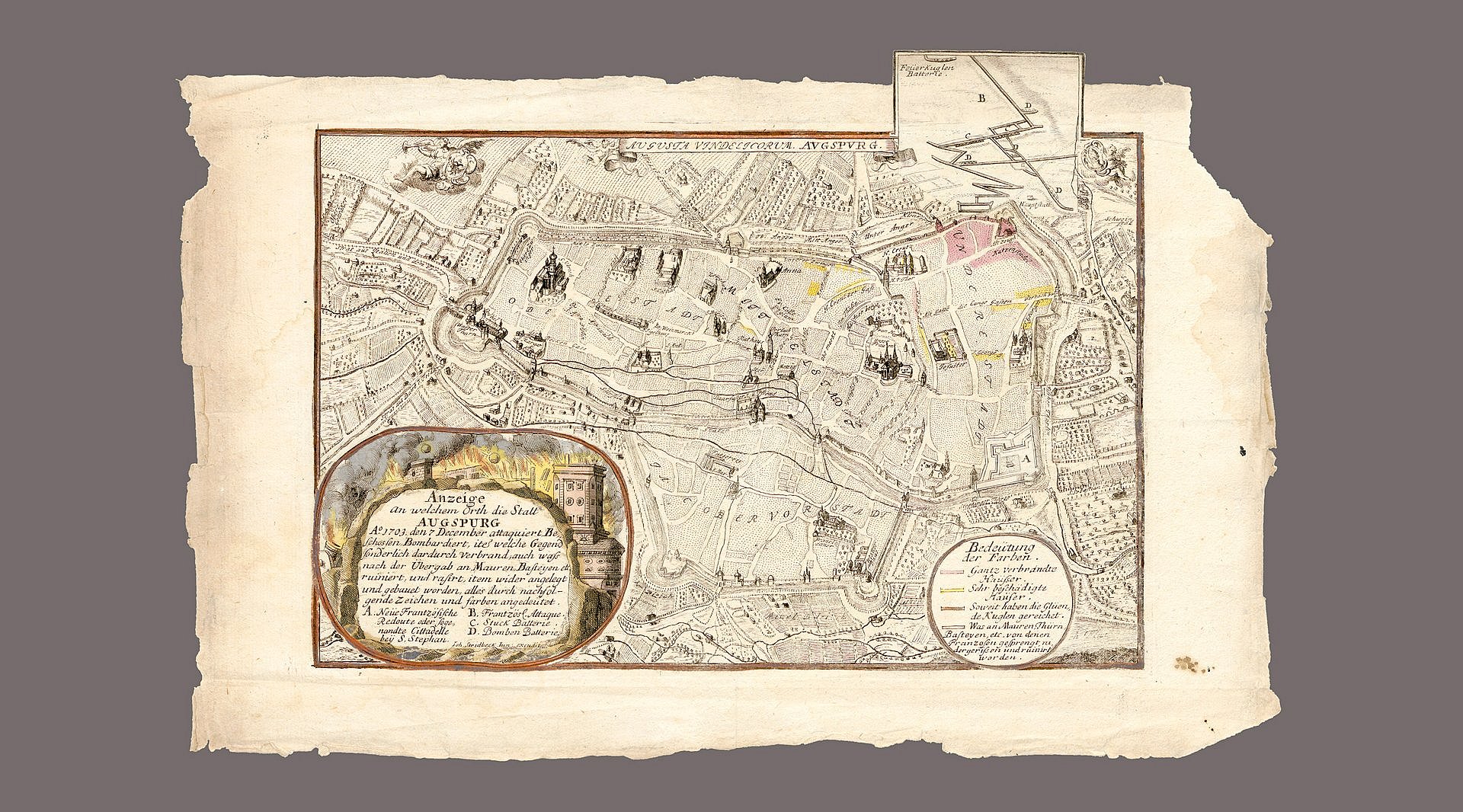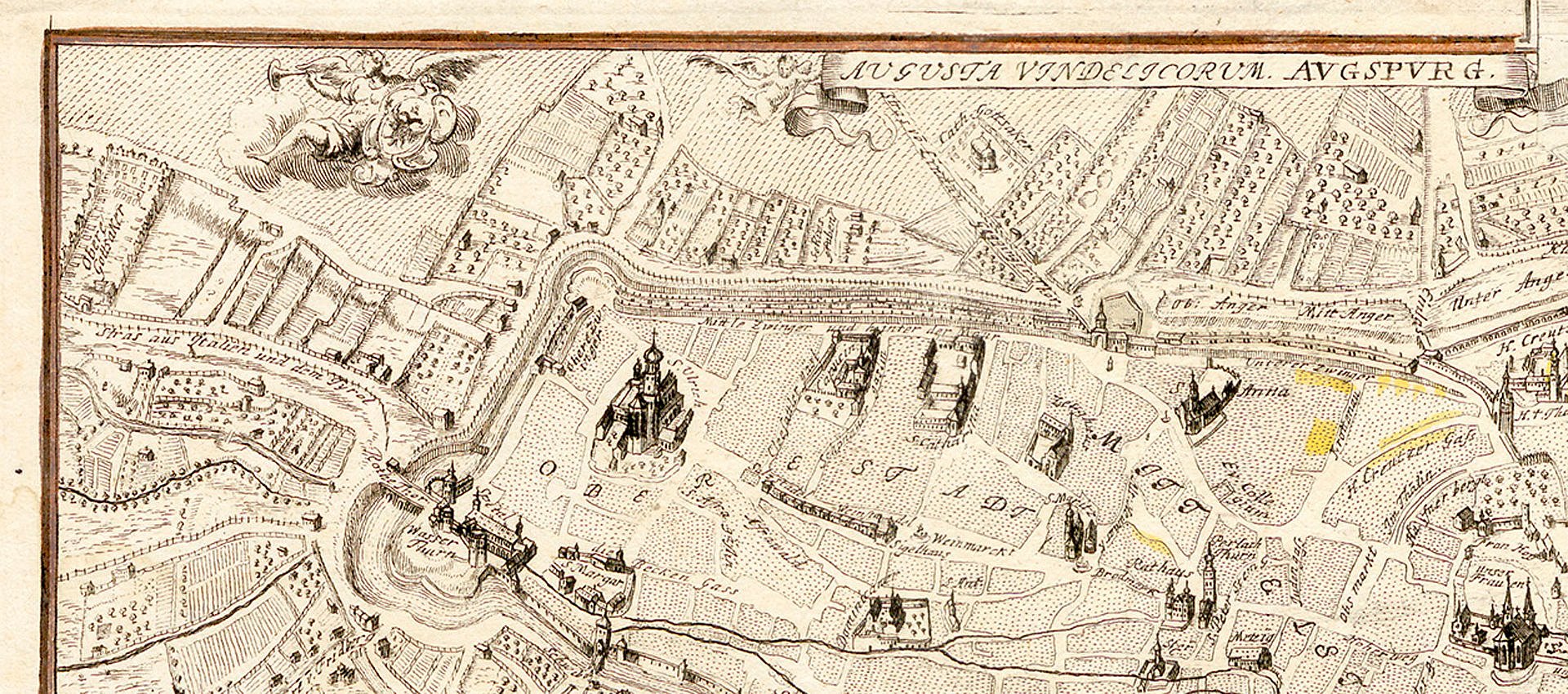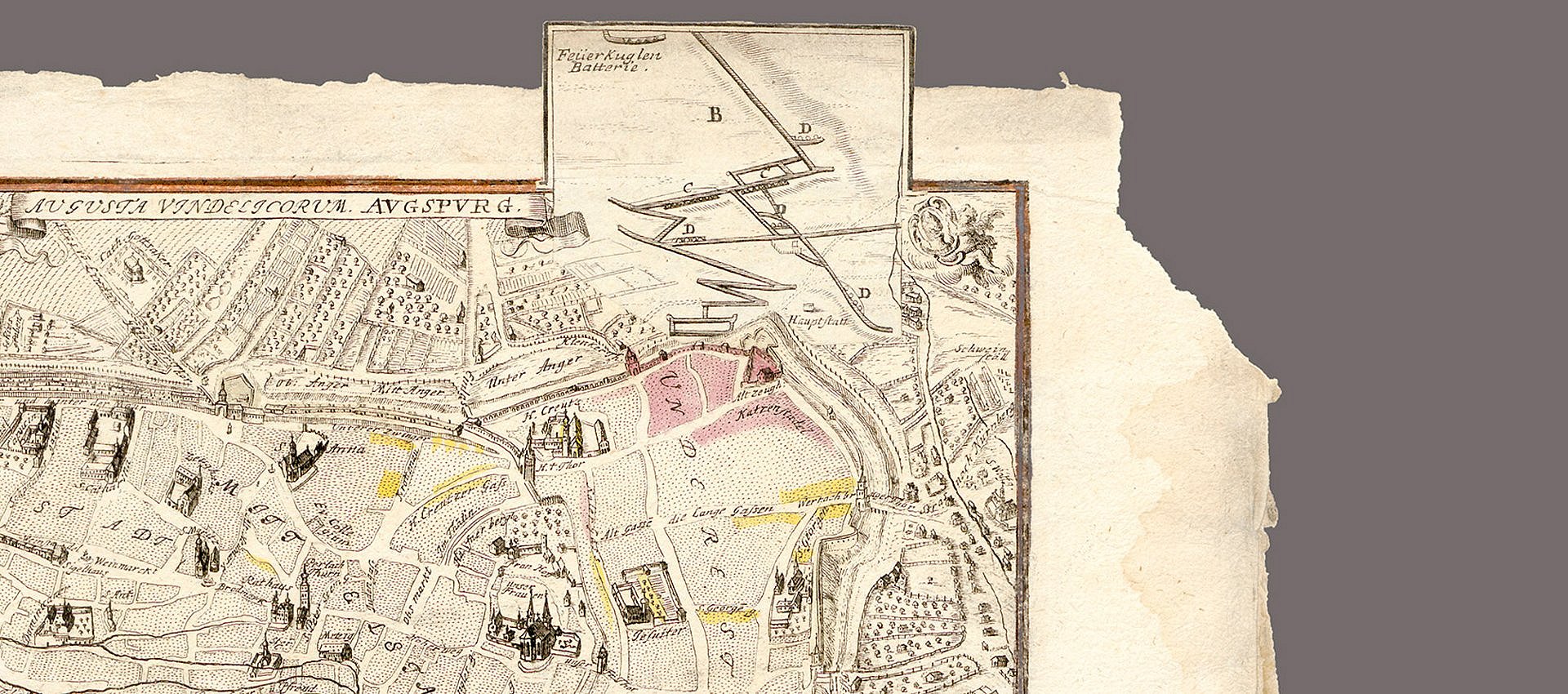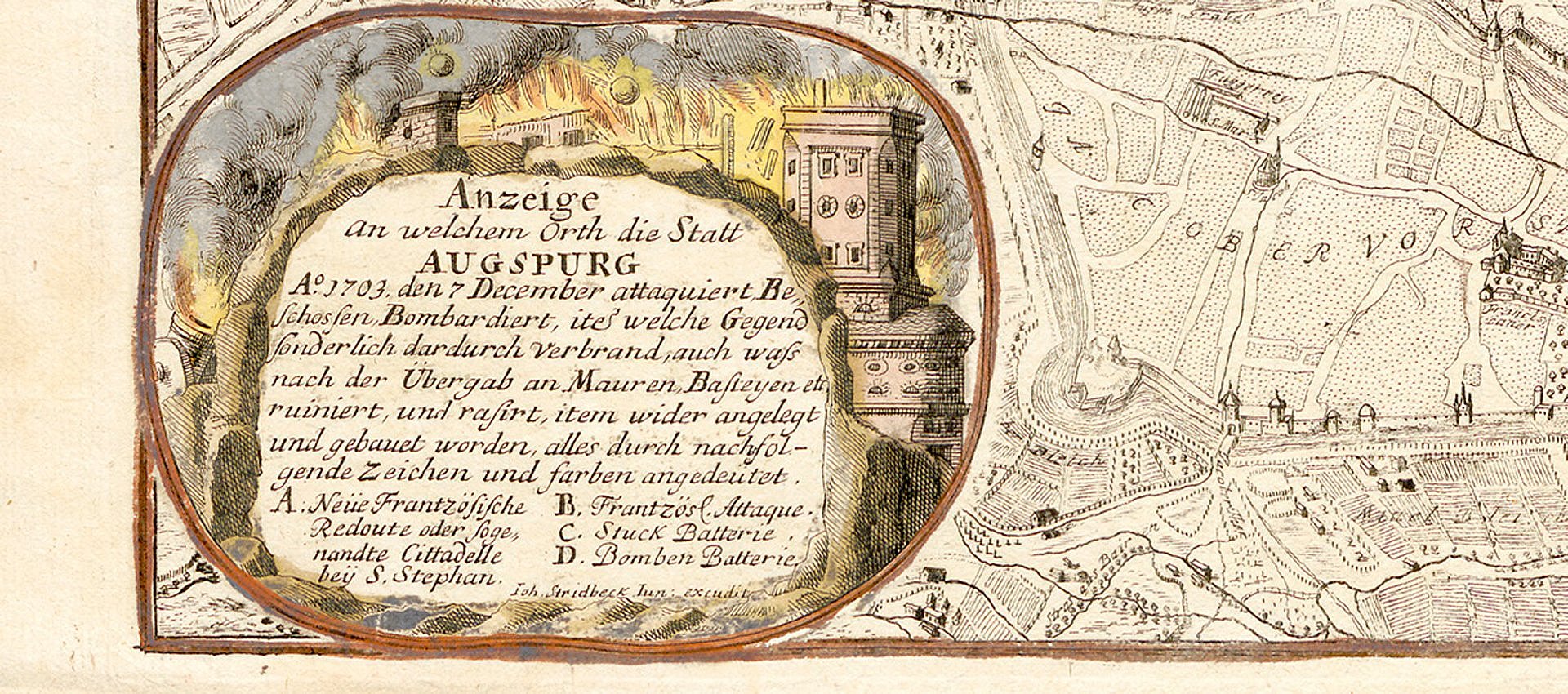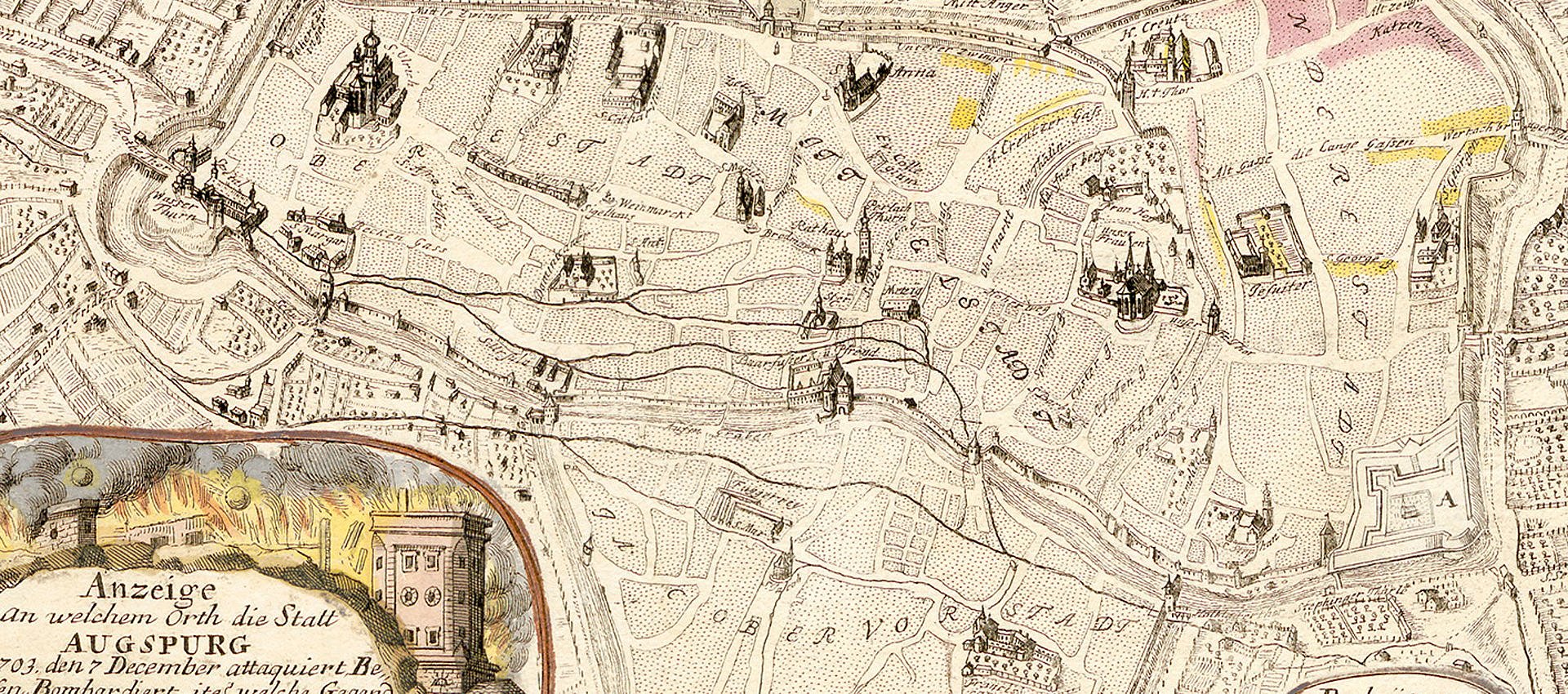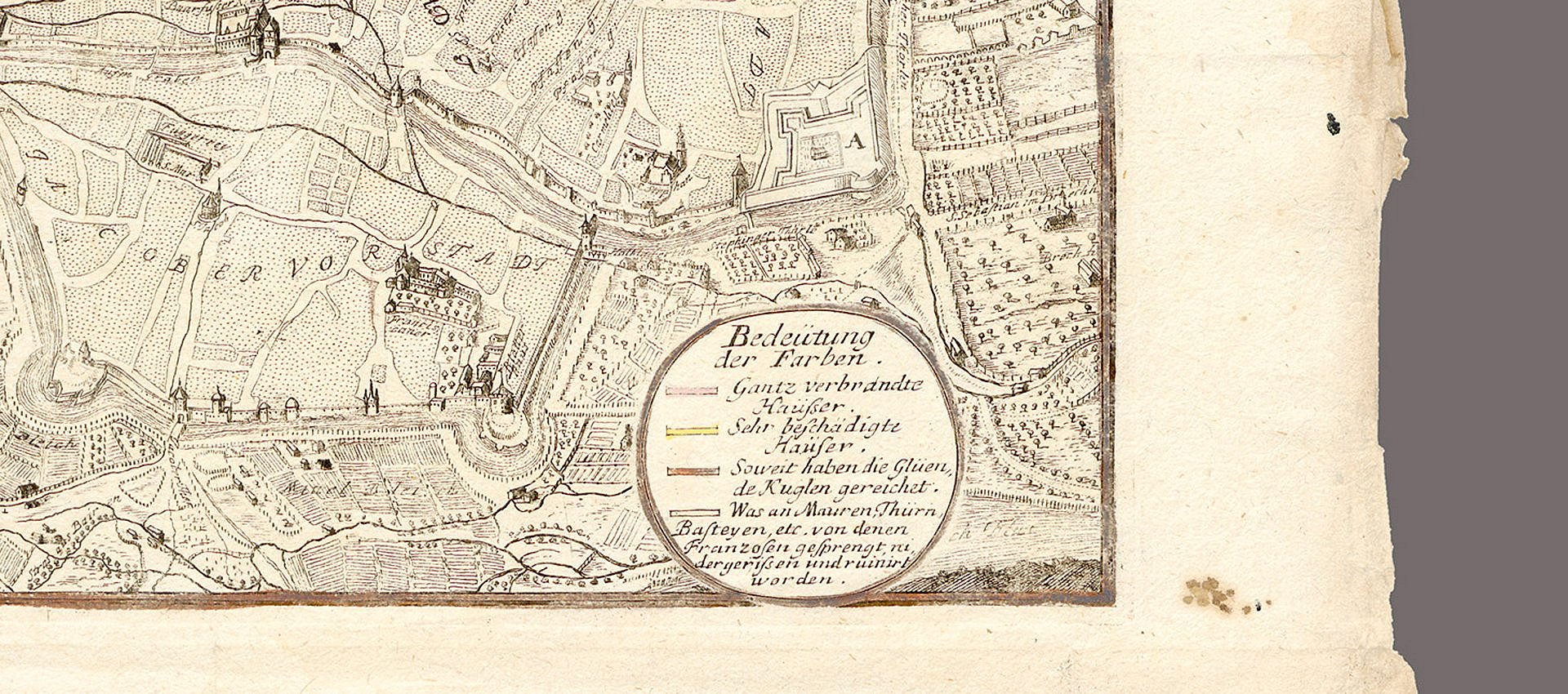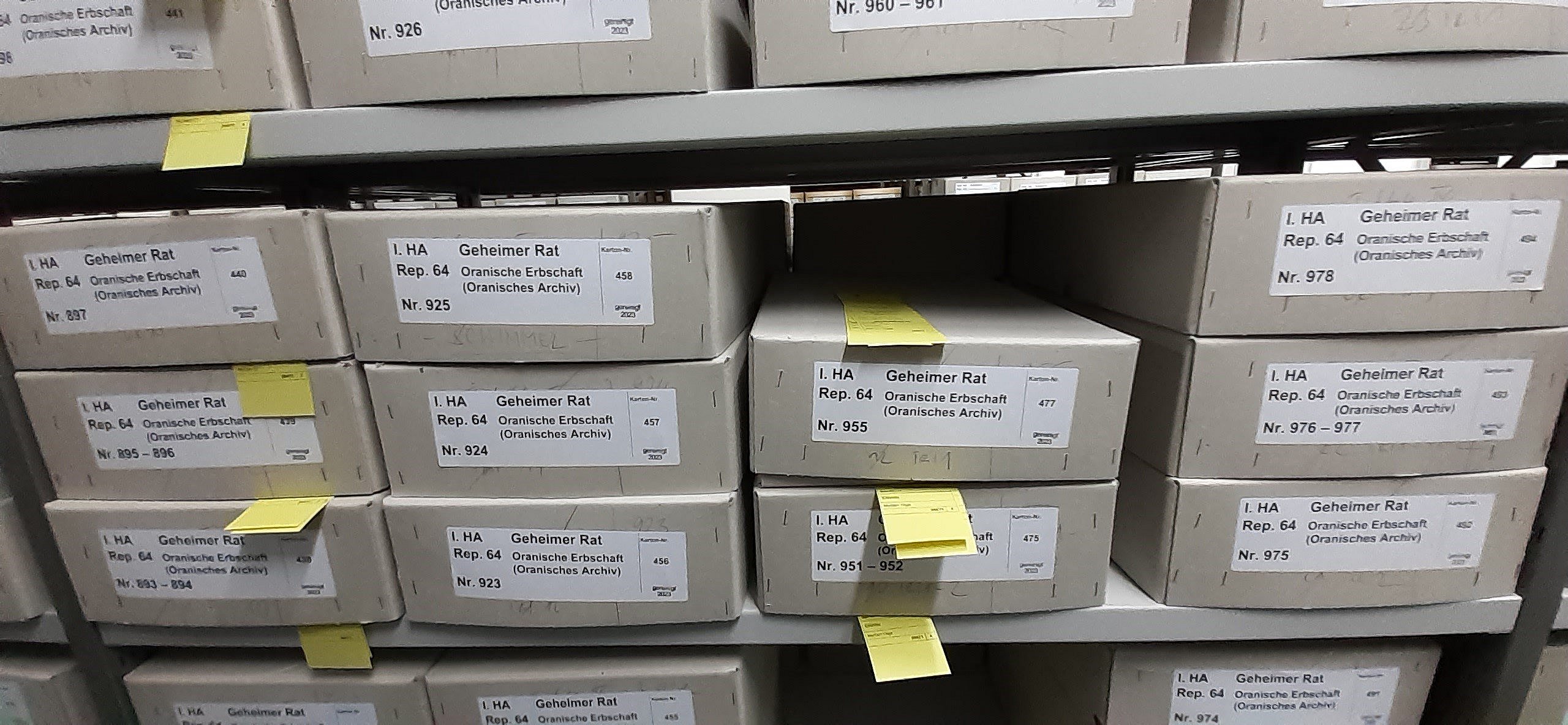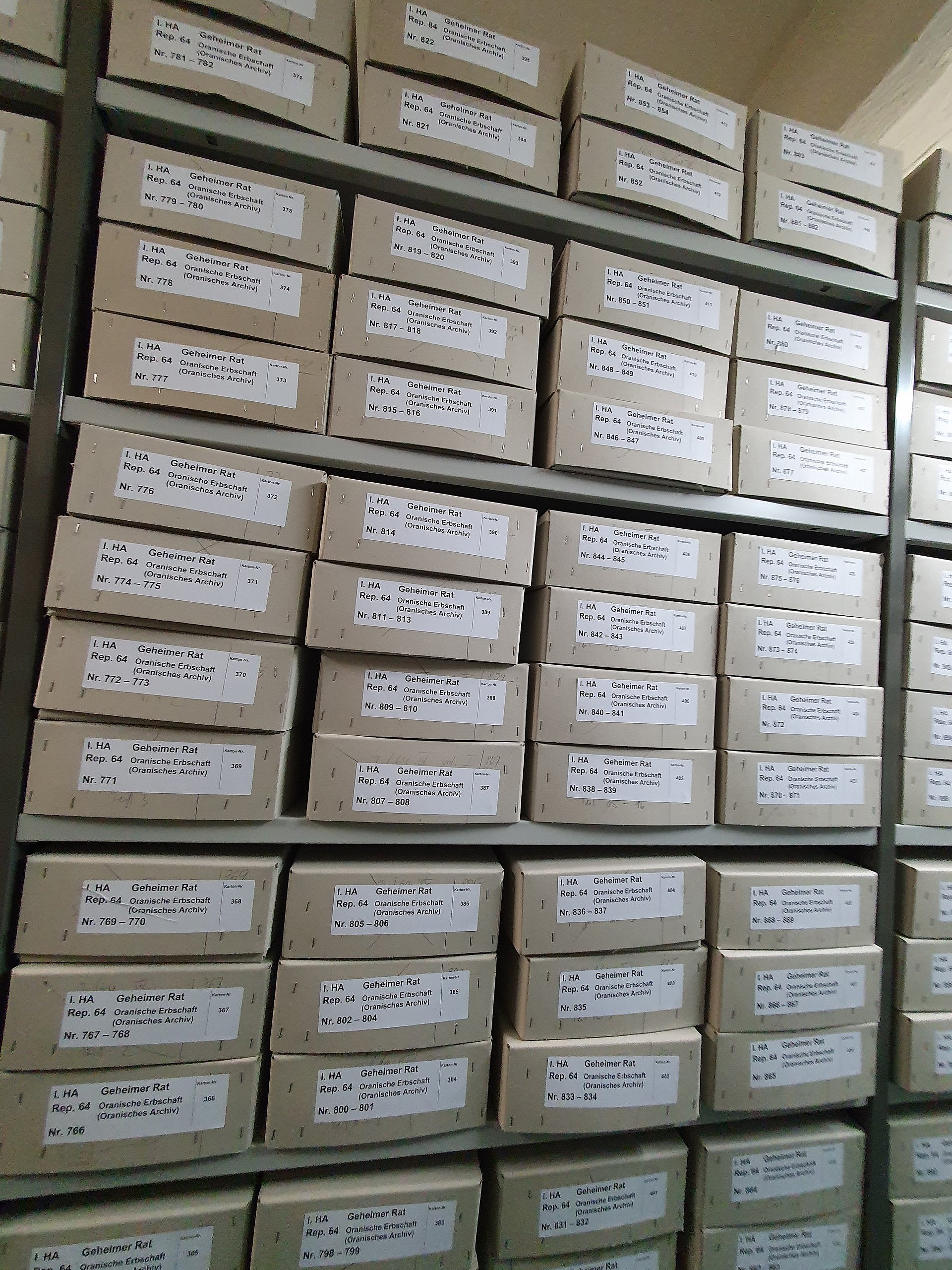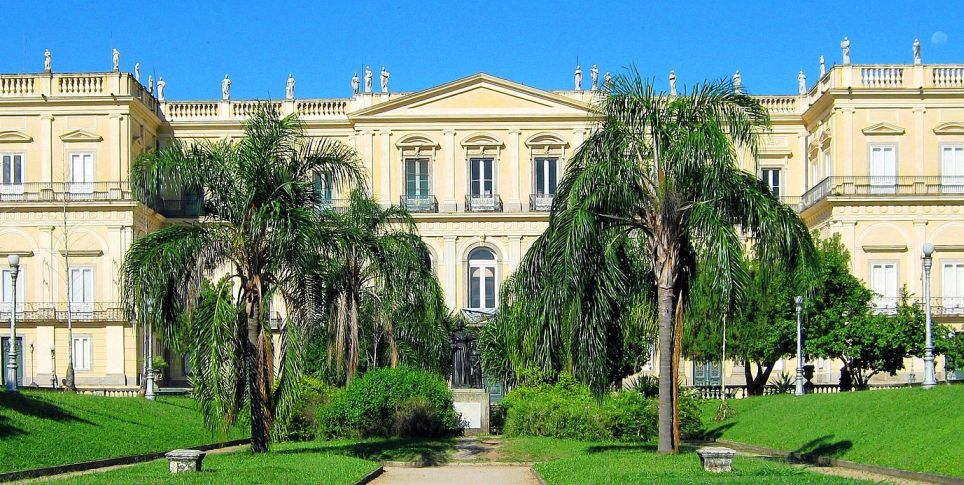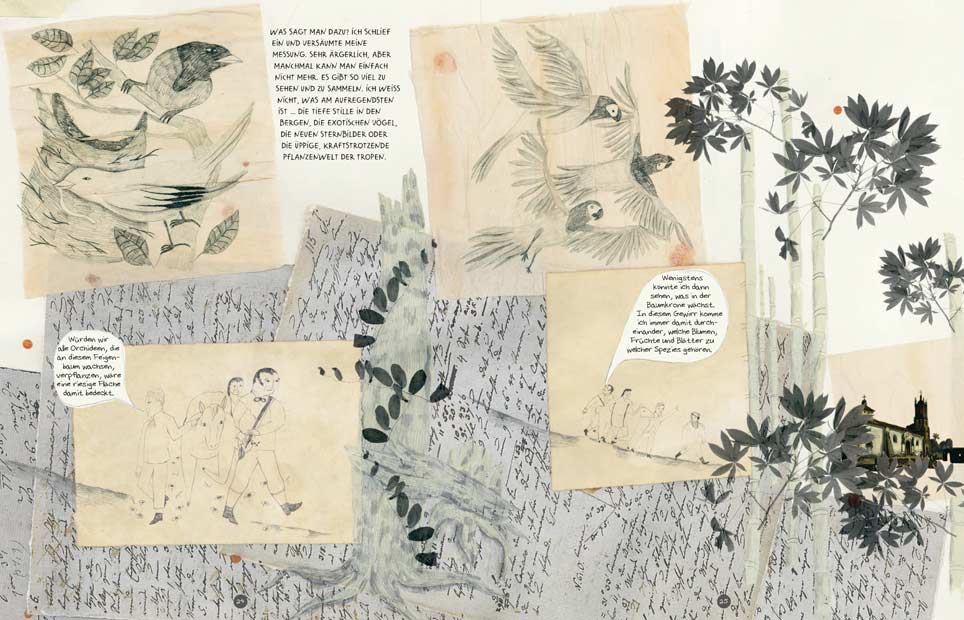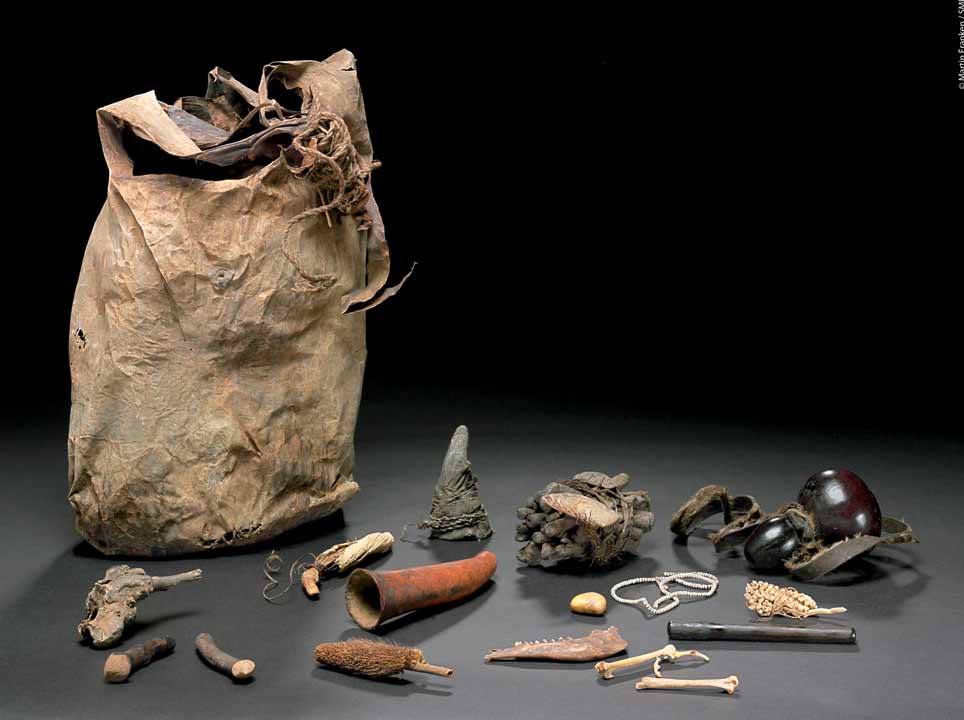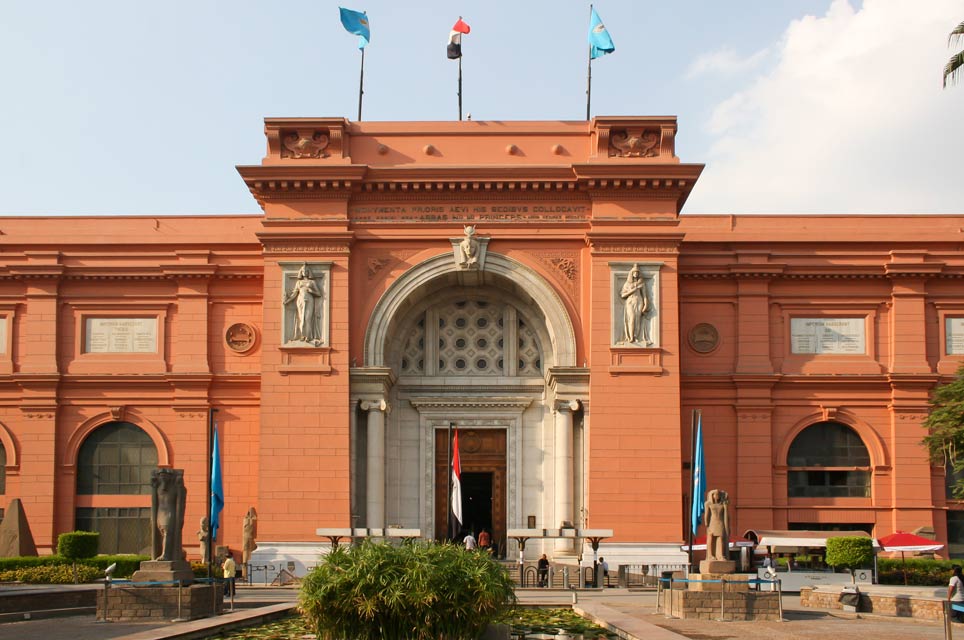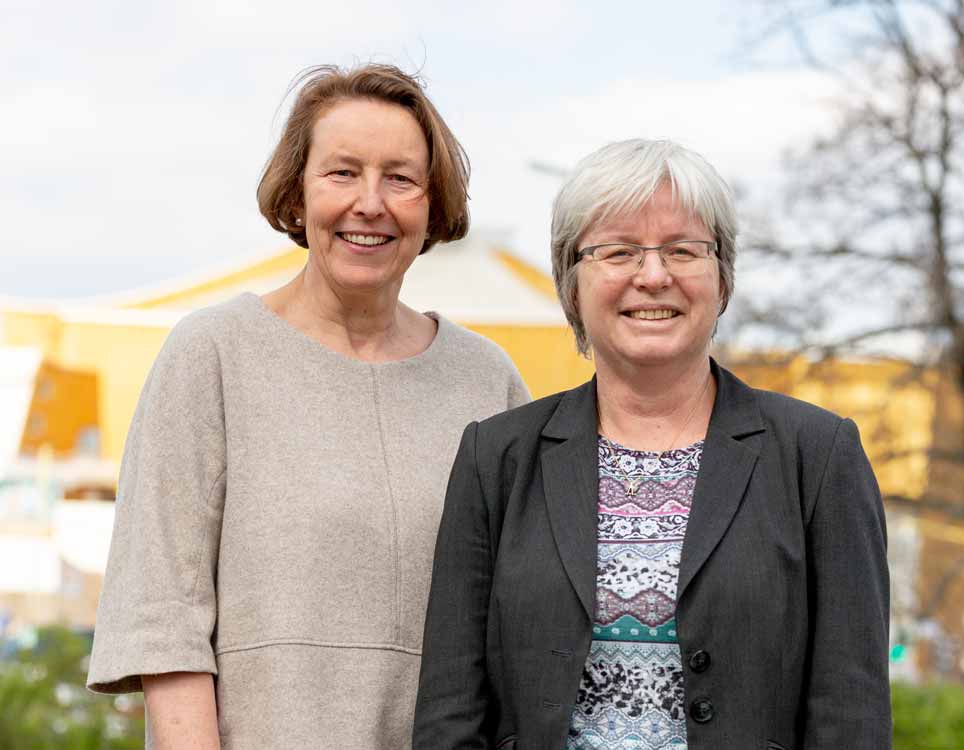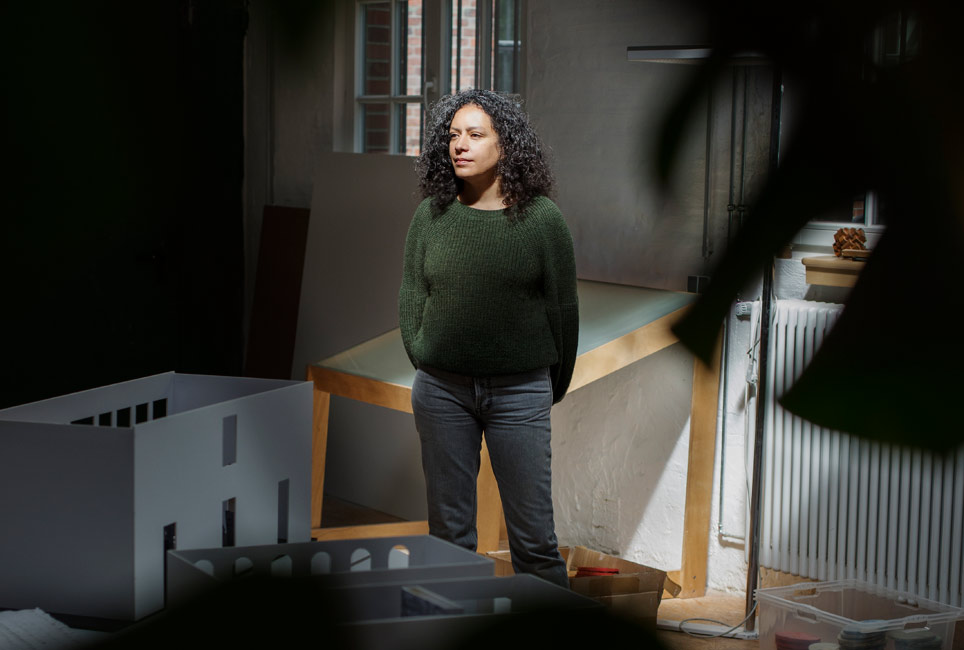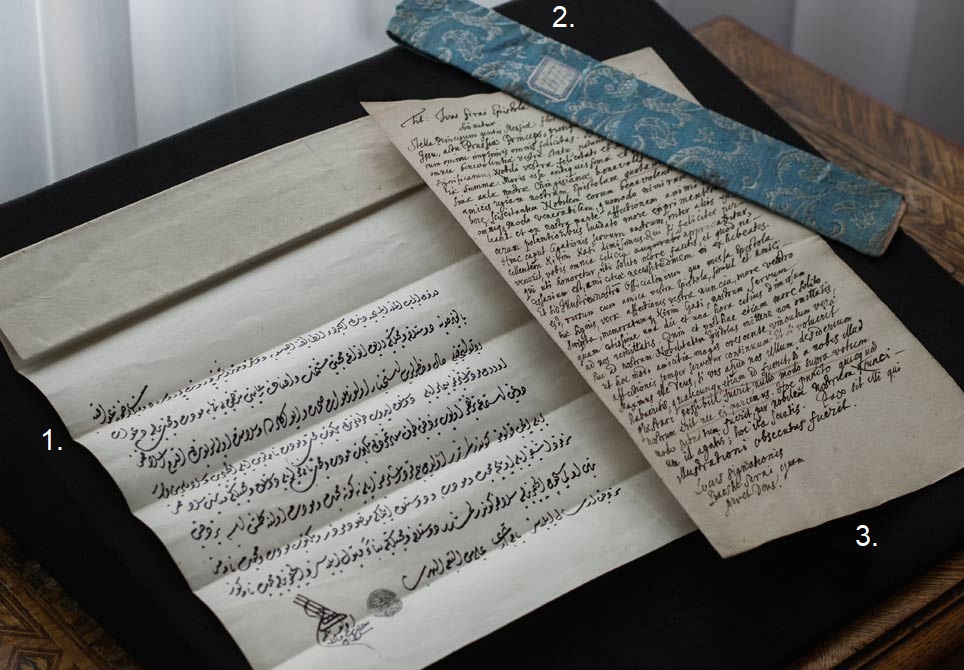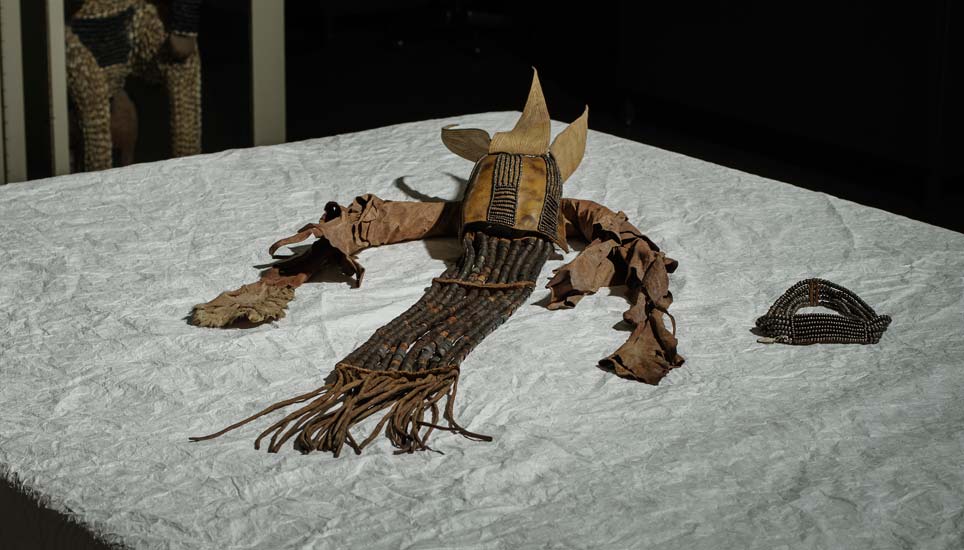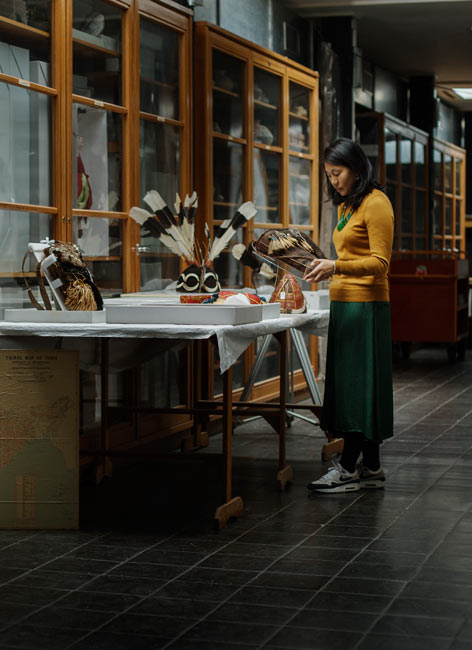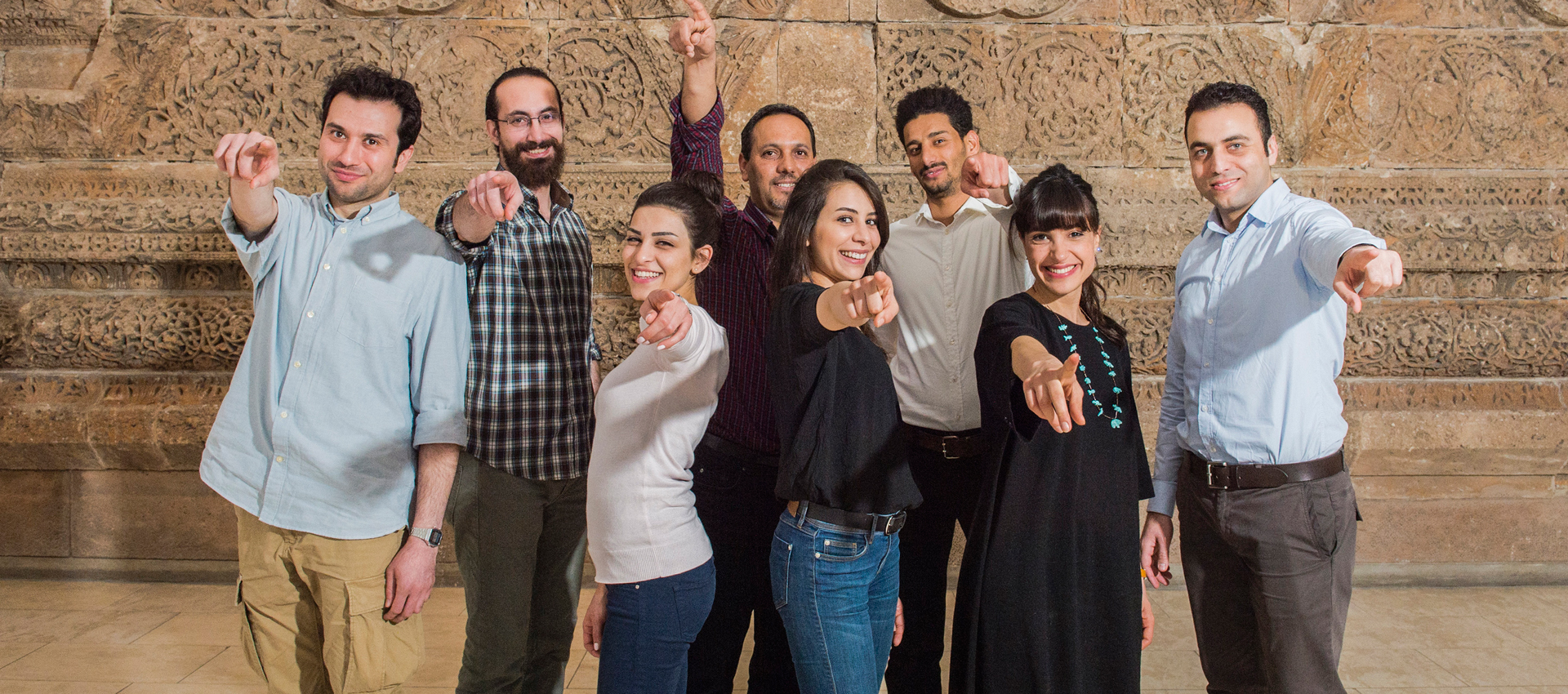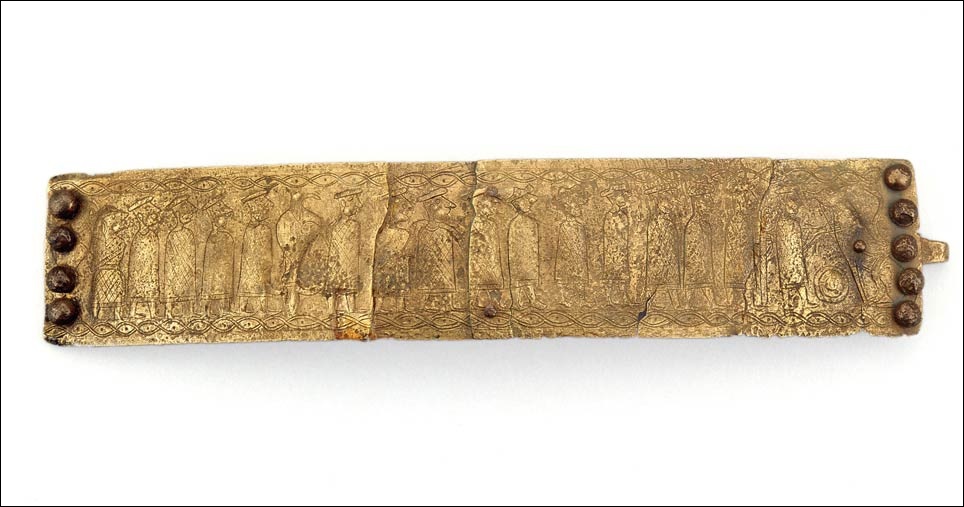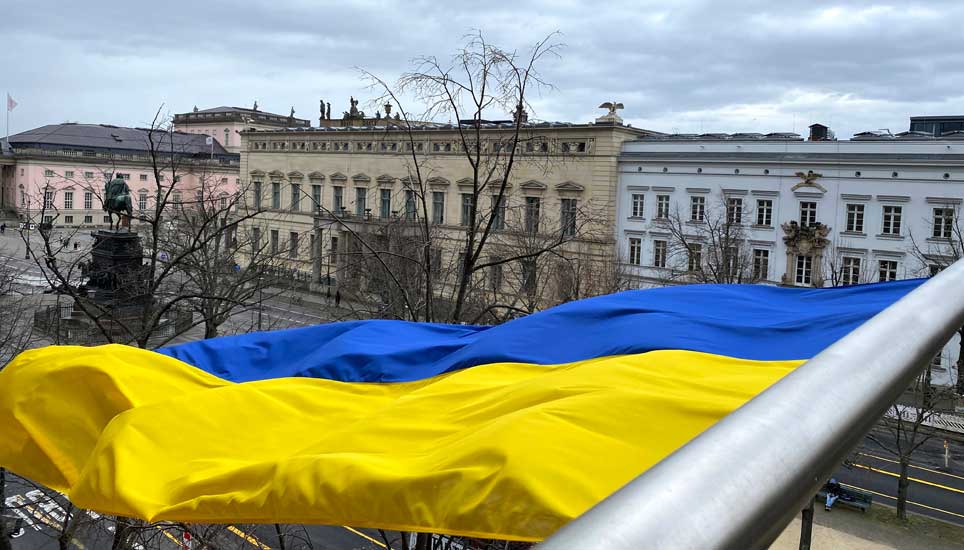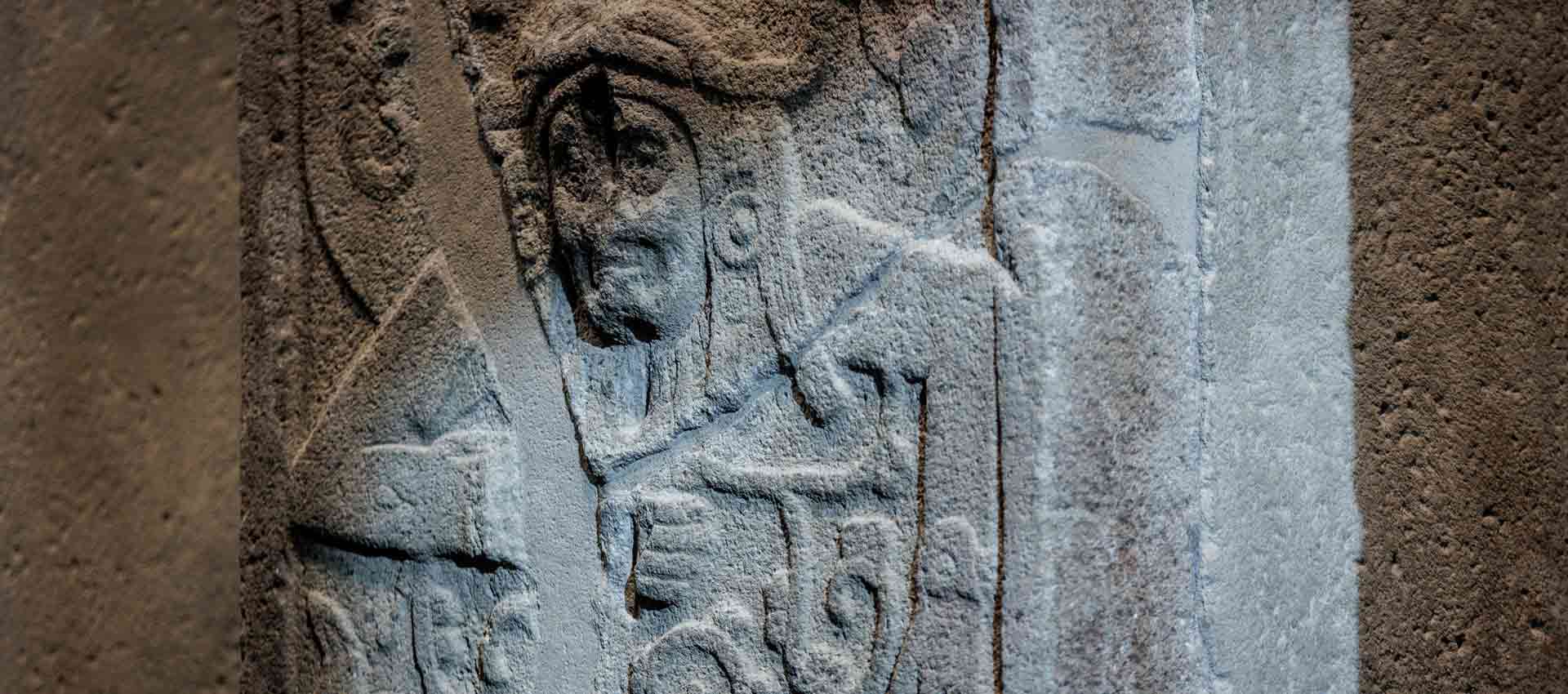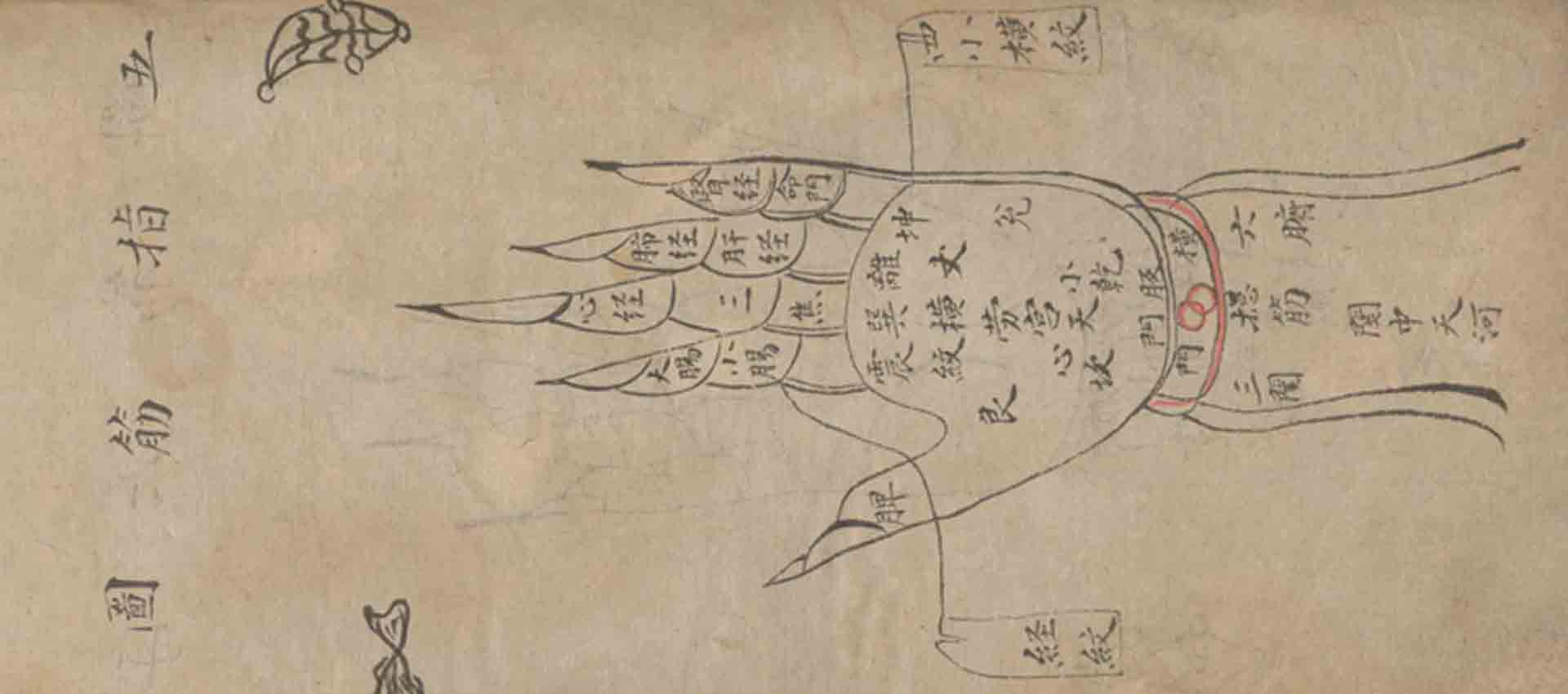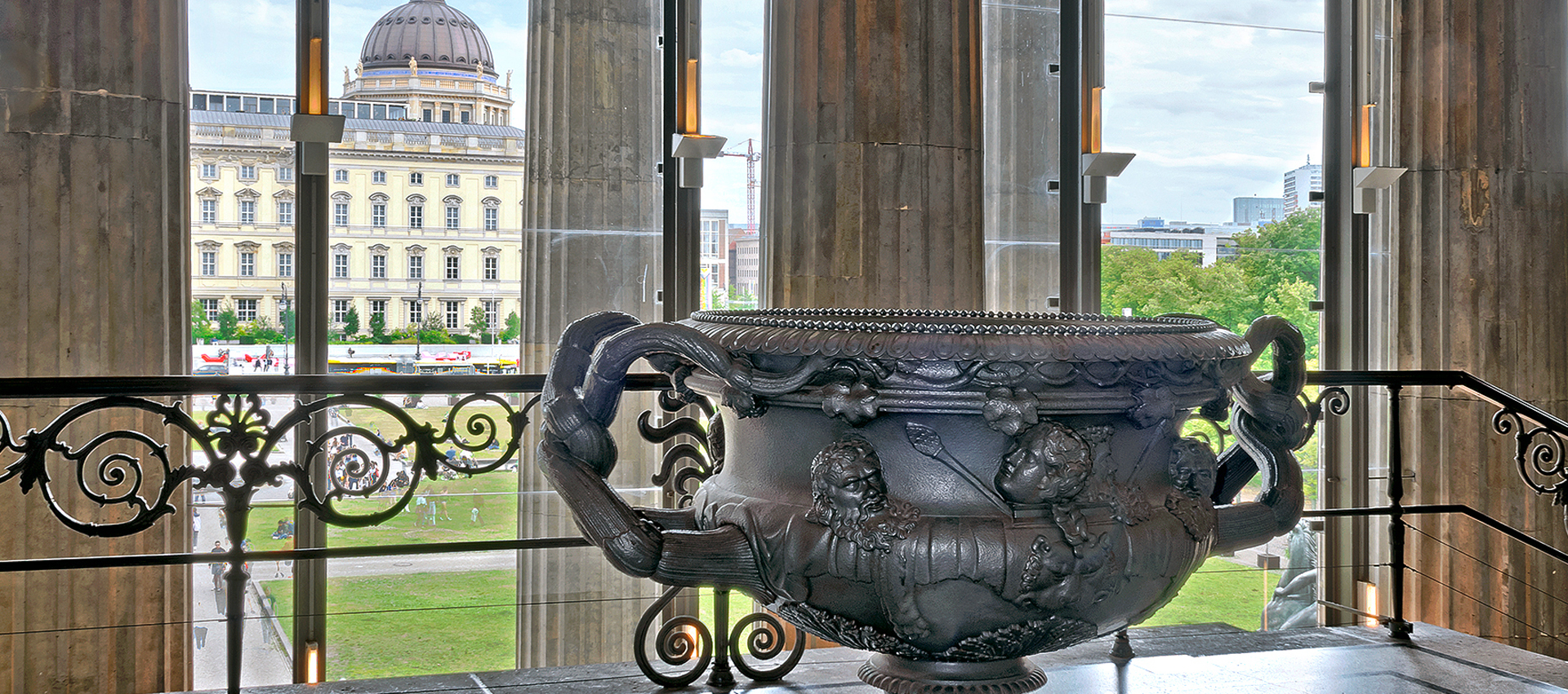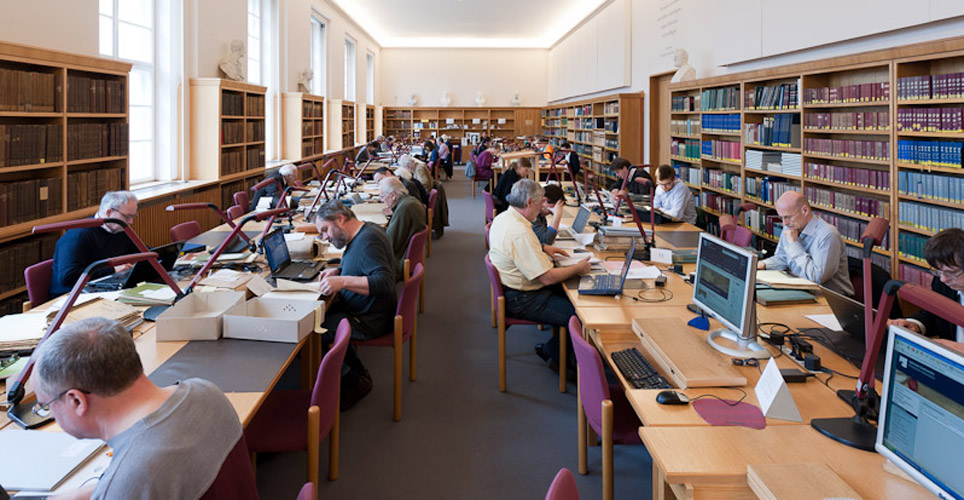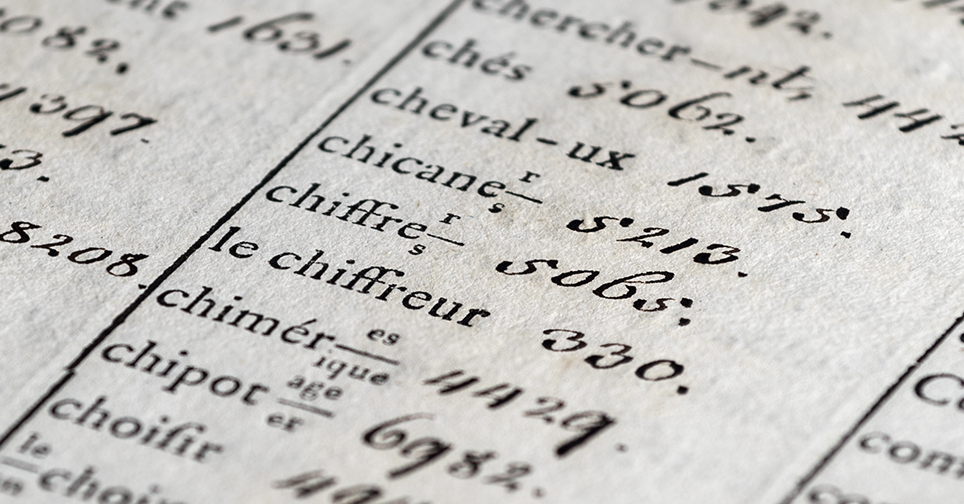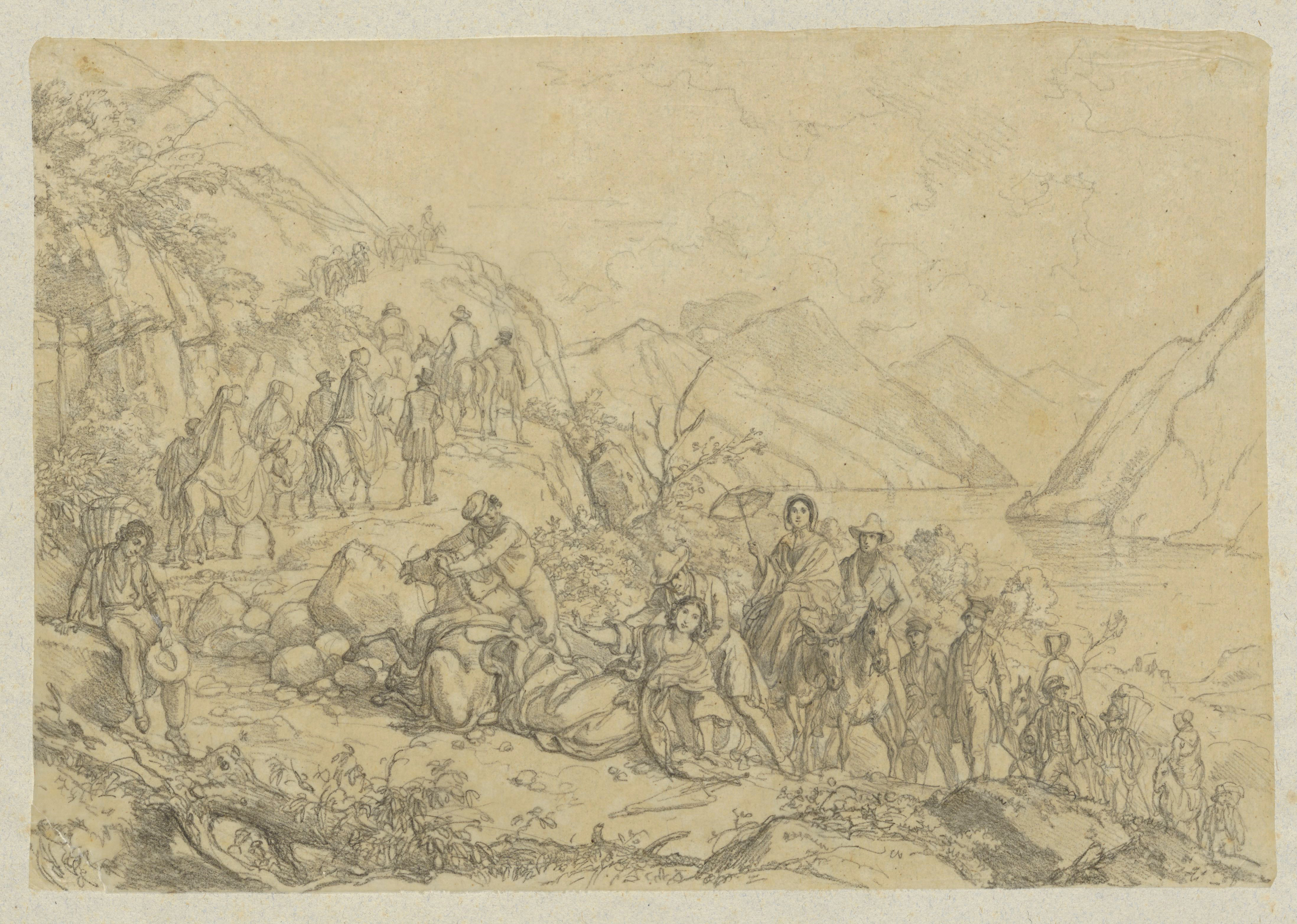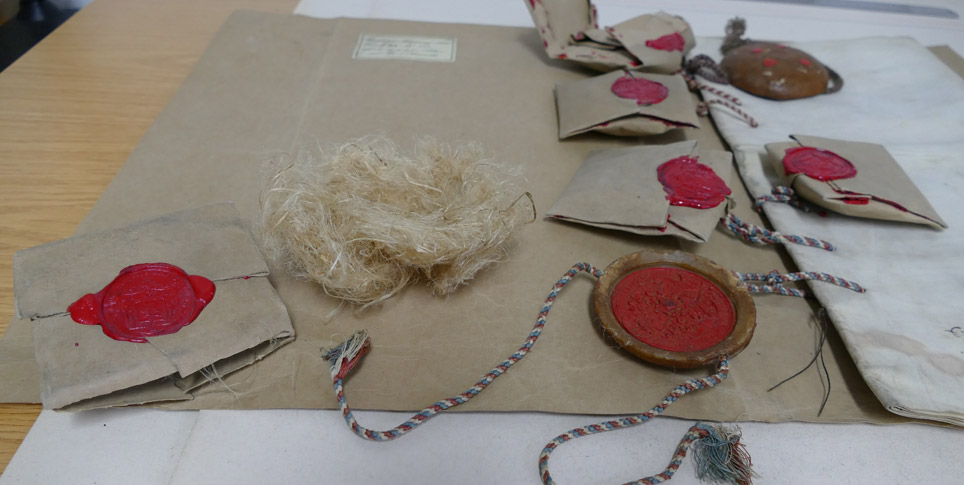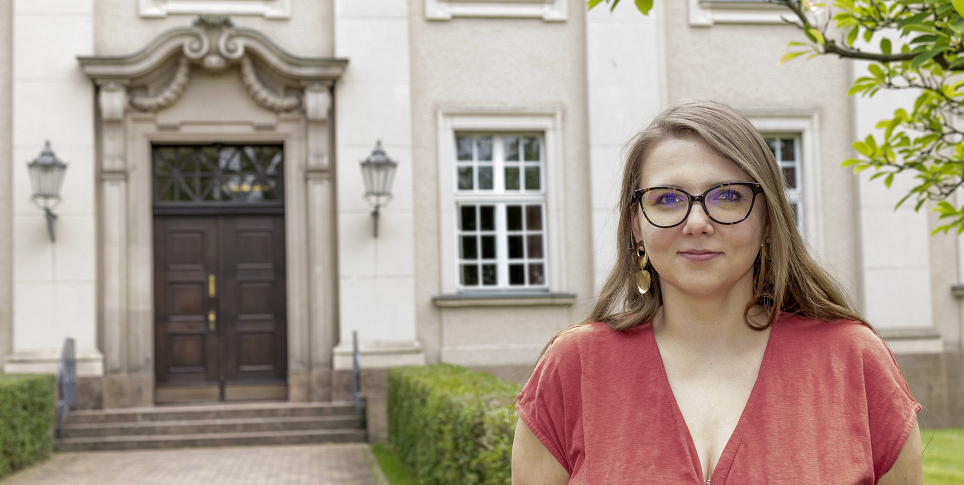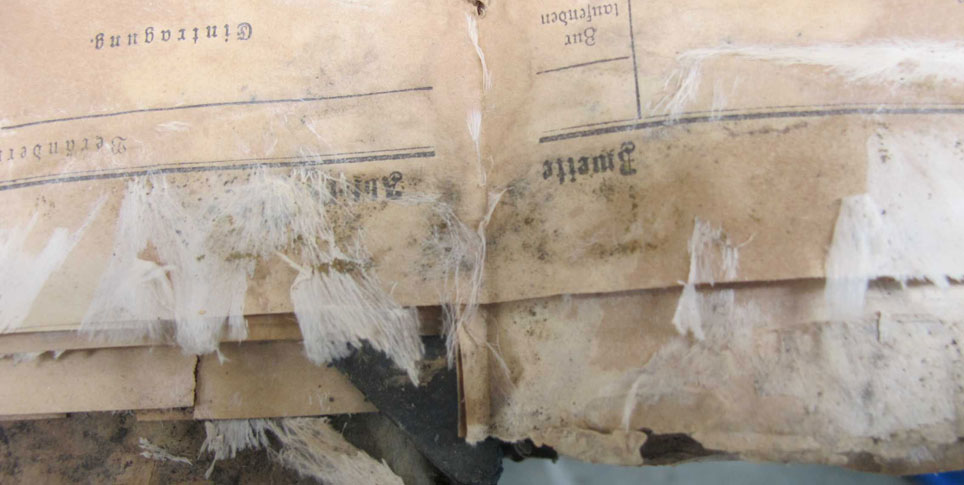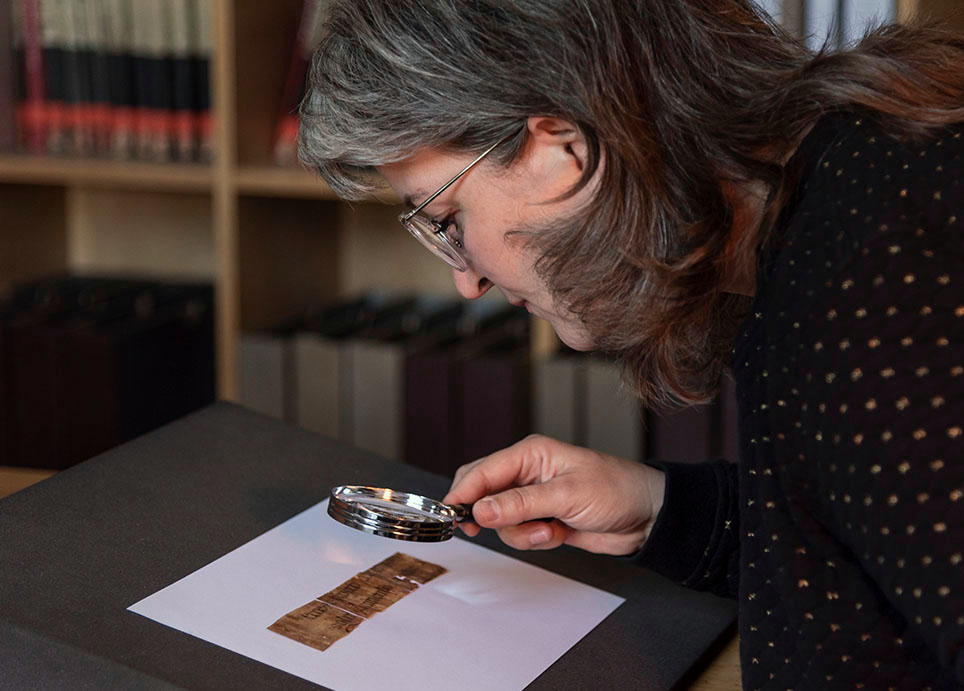A joint archive project between Neuchâtel and Berlin sheds light on a forgotten chapter of European history
A successful year for international cooperation: a Swiss association is currently funding the cataloguing of Prussian archives relating to the period in which the present-day canton of Neuchâtel/Neuenburg was under Prussian rule. The project entitled "À la recherche d'une mémoire oubliée" (In search of a forgotten memory), which is supported by the Association Neuchâtel-Berlin (ANB), will be carried out in 2025-2026 and will be accompanied by the Geheimes Staatsarchiv (Secret State Archives of Prussian Cultural Heritage, GStA PK) and the Neuchâtel State Archives. With the support of the SPK's Human Resources Department, archivist Myriam Erwin from Switzerland was employed at the GStA PK for this project and reports here on her work in Berlin:
The sources
The following holdings of the GStA PK are included in the project:
- I. HA Rep. 64 Oranische Erbschaft, partial holdings on Gorgier and Neuchâtel
- II. HA Dept. 22, sub-fonds on Neuchâtel and the County of Valangin
- III MdA, Department of Neuchâtel
The archive documents tell of the time when Neuchâtel was still under the rule of the Prussian king. This special relationship began in 1707 with the official installation of Frederick I as Prince of Neuchâtel and lasted until the revolution in March 1848, when the people of Neuchâtel declared themselves a republic, effectively putting an end to Prussian rule. This connection was not officially ended until 1857, when the Prussian king released the population from their centuries-long oath of allegiance. The fact that today's indexing of the historical documents began on 3 March 2025 - almost exactly 177 years to the day after the proclamation of the republic - is a pure but historically piquant coincidence.
A cultural commitment to the past and present
The ANB association, founded in 2014, is traditionally chaired by a prominent figure from Neuchâtel - currently a National Councillor. The preparatory work that took place between 2010 and 2014 with the support of the archivists at the GStA PK in Dahlem formed the basis for the foundation of the association and the acquisition of private project funding.
ANB sees itself as a mediator between past and present: the aim is to make the shared historical, cultural and documentary heritage of Neuchâtel and Berlin visible. In addition to archive cataloguing, accompanying cultural events are also planned - both in Neuchâtel and in Berlin.
Expectations
The project addresses a central challenge: The parallel transmission of sources in Neuchâtel and Berlin. The original aim of the association was to improve the accessibility of relevant documents on the history of the Principality under Prussian rule with an "inventaire détaillé" including bilingual cataloguing (French/German). A central concern here is user-friendliness: researchers should save time when selecting and ordering files thanks to a detailed description. The indexing would follow the principle "What you see (online) is what you get (in the box)".
To this end, the existing notes in the archive information system of the GStA PK should be revised and supplemented with controlled keywords. In discussions with historians from Neuchâtel, topics, questions and search behaviour were analysed in order to take their needs into account. In addition to scientific analyses, a generally understandable publication of the project results is also planned. An ANB Instagram channel already regularly presents "finds" from the archives.
Between past and present, between TARGET and ACTUAL status
History sometimes seems to repeat itself: When a committee under Count Ernst von Metternich met in Neuchâtel in July 1707 to negotiate in favour of Frederick I's claims, it found that the situation on the ground was very different from what it had expected. "All principles had to be changed", according to a contemporary report (I. HA Rep. 64, No. 950, f. 663), although the Prussian agents had been working on this for years.
The archivist, who was familiar with data structuring and expanding the index tree, had a similar experience in 2025 when she opened the first file - with an unusually deep indexing of content for the GStA PK. It was necessary to adapt to existing practice: Indexing is currently carried out by means of "shallow" entries in the "Enthält-Vermerk"; the originally planned bilingualism and entry of standardised data cannot be implemented systematically.
Neuchâtel is currently working on a solution for the semi-automated recording of metadata - with the aim of recording personal, function, location and subject information in a structured manner and transferring it to a FileMaker database. Historical indices of council minutes and court judgements from the 18th and 19th centuries serve as a basis.
Cataloguing with an open mind
The indexing does not follow a narrow catalogue of topics - the archivist sets her own specific priorities. In doing so, she pays attention to sources that could also be of significance beyond political history. For example, ciphered correspondence from the early 18th century (e.g. I. HA Rep. 64, Rep. 944) provides valuable insights into the diplomatic practices of the time. Prussia's communication with Protestant places in Switzerland - such as Zurich, Bern or Geneva - in the context of planned church unions, among other things, supplements parallel records in Swiss archives.
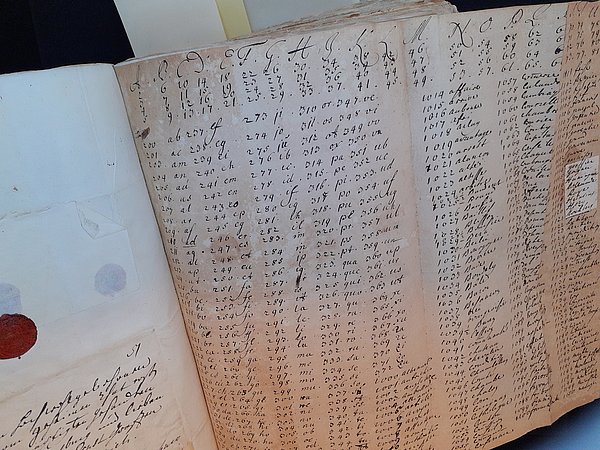
From everyday life to the archive
"You only need to open a bundle of files and start reading to gain immediate contact with past life," wrote the German historian and archivist Friedrich Meinecke (1862-1954). This proves to be impressively true here. In the documents, one encounters officers, craftsmen and women whose fates make the everyday life of the time tangible. From the doctor who settled in Neuchâtel to the castle guard with his chicken coop or the wealthy woman who committed suicide - the range of biographies is impressive.
Whether name directories, travelogues, forestry visits or invoices - the spectrum of sources is broad. They range from power struggles between contenders for the rule of Neuchâtel to major diplomatic events such as the Congress of Utrecht and local issues such as crop failures, social aid for refugees or letters of congratulations to the royal family.
Sometimes the gold treasure found even benefits the cultural heritage of another actor [example: siege of Augsburg by French troops, see illustration].
It is striking that the Neuchâtel inhabitants often addressed the sovereign directly. Despite formal politeness, many requests show an astonishingly pragmatic relationship with the king. Personal and family interests were openly expressed: in this context, the personal files are particularly important for prosopography (personal research).
Challenges of cooperation
A project of this kind thrives on mutual trust, open communication and strong institutional support - in both countries. Smooth access to the IT infrastructure and archives as well as an appreciative reception with accompanying measures by the seconded expert are crucial. Given the limited resources at the partner archive, this support cannot be taken for granted.
Personal hurdles also play a role: different working cultures, social and bureaucratic differences or the tension between project work and integration in the host country are serious factors in an adventure that is not only archival, but also deeply human in nature.
Thanks are also in order for the many people - whether in Berlin or Neuchâtel - who offered their help spontaneously and without complications. The warehouse staff at the Westhafen archive site also deserve special mention.
Conclusion
The project is not yet half complete - and yet the adaptation period is far from over. Who would still think that archives are risk-averse institutions?
Further links
- Neuchâtel-Berlin Association - Association Neuchâtel-Berlin
- Instagram channel L'Association Neuchâtel-Berlin
Contact
- Scientific management of the project Ulrike Höroldt and Susanne Brockfeld (GStA PK)
- Contact the association
